Several years ago I got a couple of Amaryllis bulbs on clearance after Christmas. I wasn't very interested in these plants since I had never seen one in person before, but for $1 or whatever the ridiculously low price was, I'd take a chance.
Five or six years later, these plants have been blooming for me every winter, requiring almost no attention during the summer growing season. The only thing I need to do is remember to move them into a dark corner of the garage in early autumn.
Oh, then I have to remember that they're in the garage and bring them out into the house during winter. I've recently done that, and the plants have started actively growing again:
As you can see the one plant put out new growth almost immediately:
The other though is getting off to a slower start:
No action to report there yet, but I have no doubt that it will begin soon. That is the plant that produced an offshoot this summer:
I was shocked to see the little set of leaves poking through the soil, as I never expected anything like that to happen.
These have been in the exact same pots that they came in years ago, with the same peat for potting mix. Even thought the instructions said to repot the bulbs each year I never have, and they seem to be doing fine.
In fact, Christine over at The Gardening Blog said that Amaryllis actually hates being repotted, so my laziness paid off.
They get about a half day of full sun, depending on where in the yard I keep their pots (usually near the house), I may water these once or twice during the driest parts of summer, and they get a little miracle gro water a few times too, but that's it. Then bring into the garage for a couple of months until the leaves dry up, then bring them into the warmth of the house.
Those first photos were from four days ago. Here they are this morning:
Very soon a flower stalk will emerge with the foliage, and I'll see their bright blooms just when I need them the most.
This one is still not really doing anything:
But its baby is starting to grow:
Of course I'll post about the blooms when they arrive, but I just wanted to show you the "early days" as they wake up.
Does anybody else grow these? What sort of success have you had with them?
.


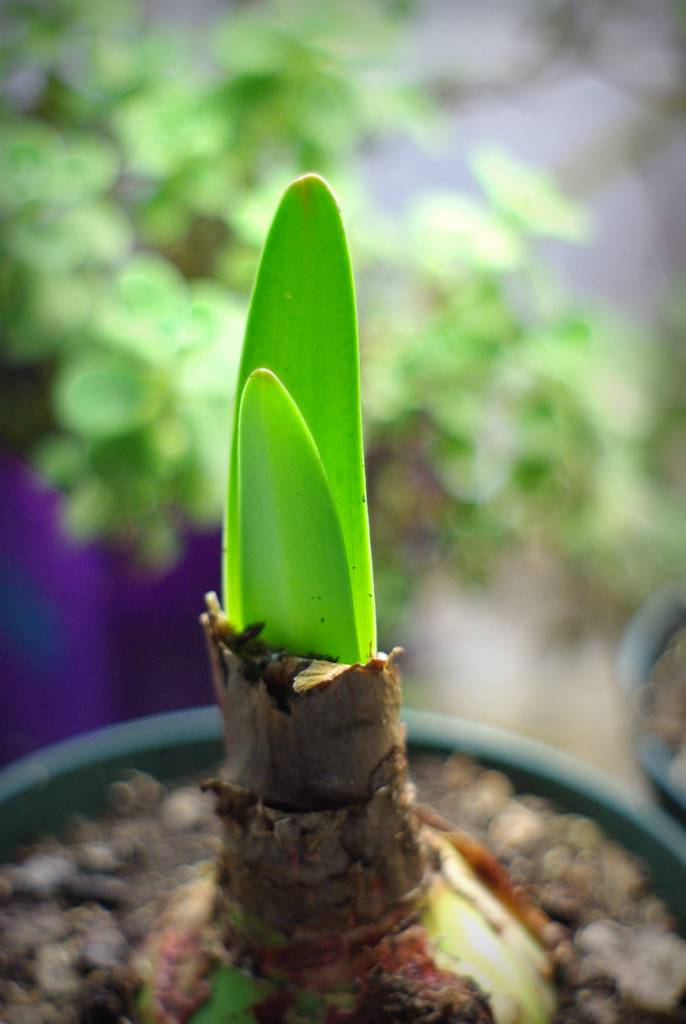
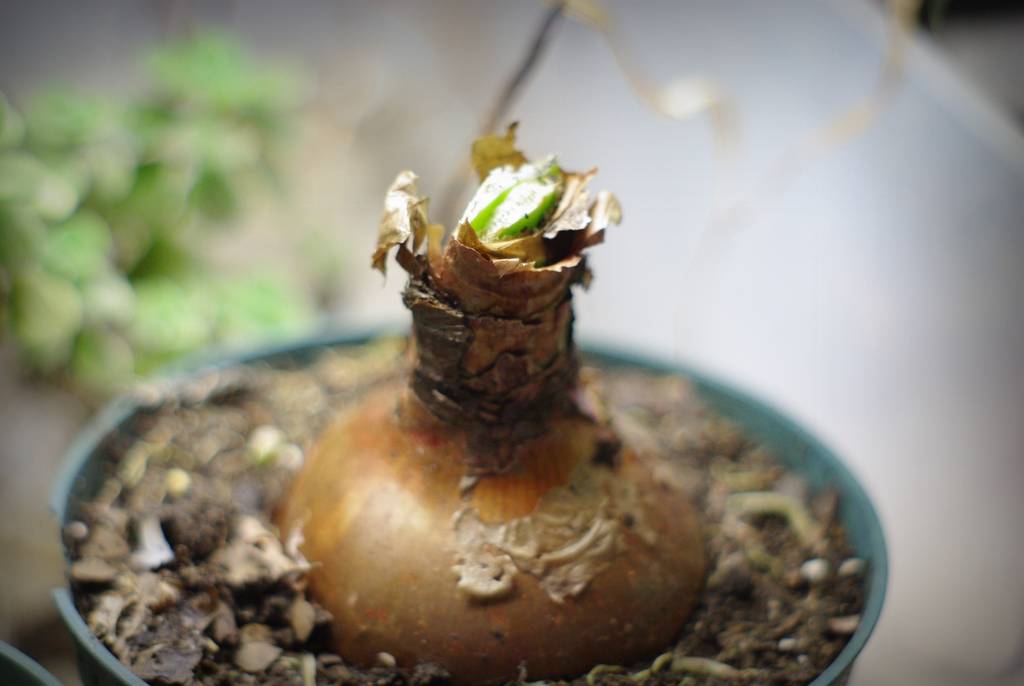
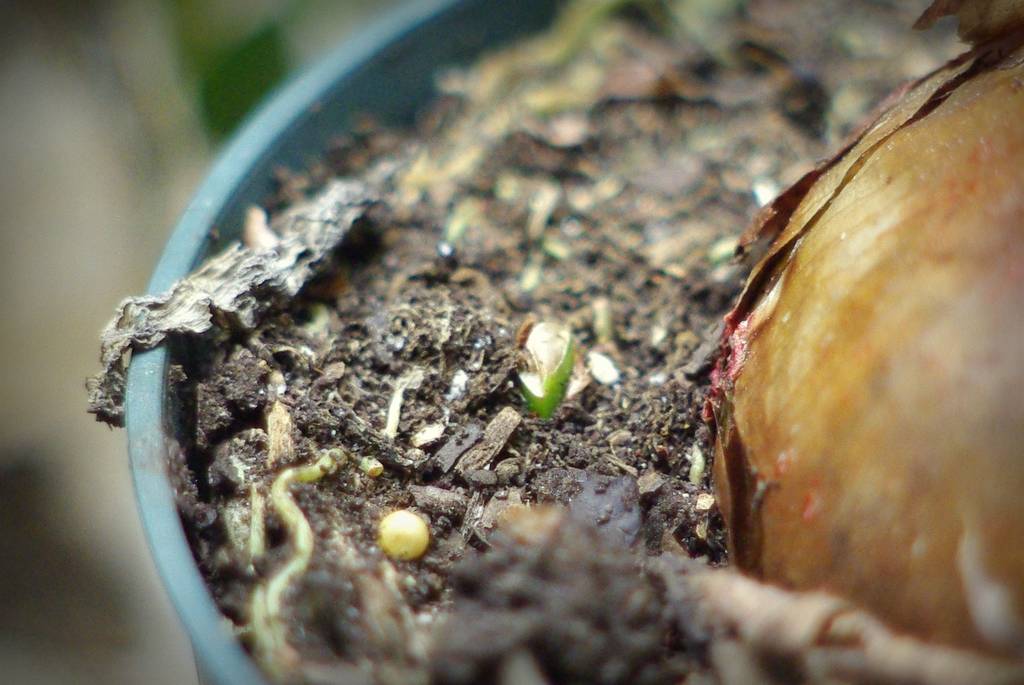
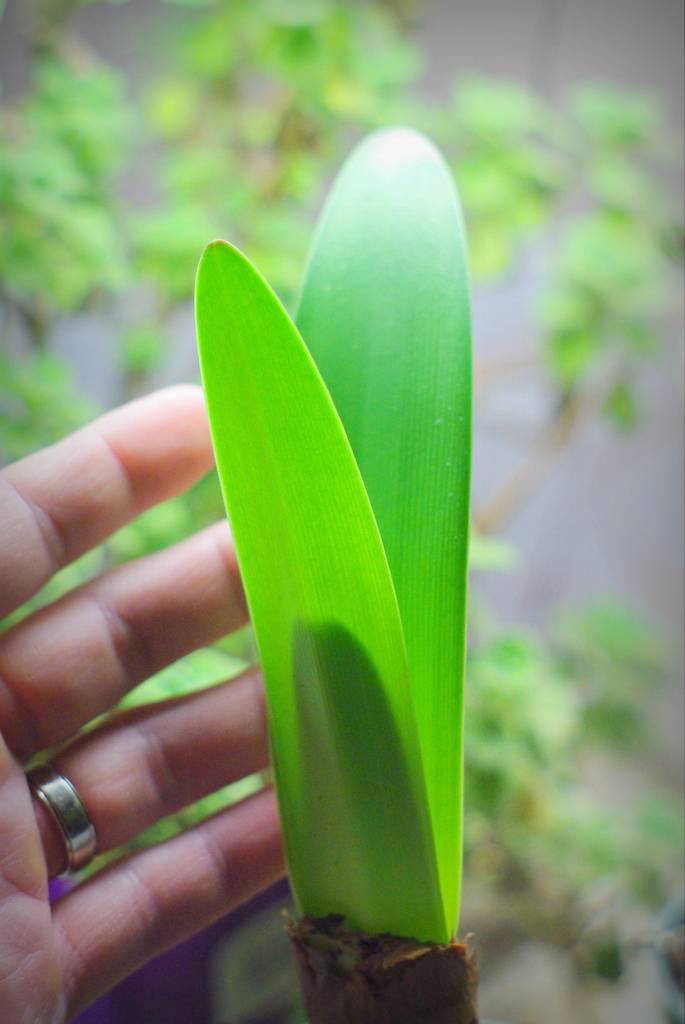
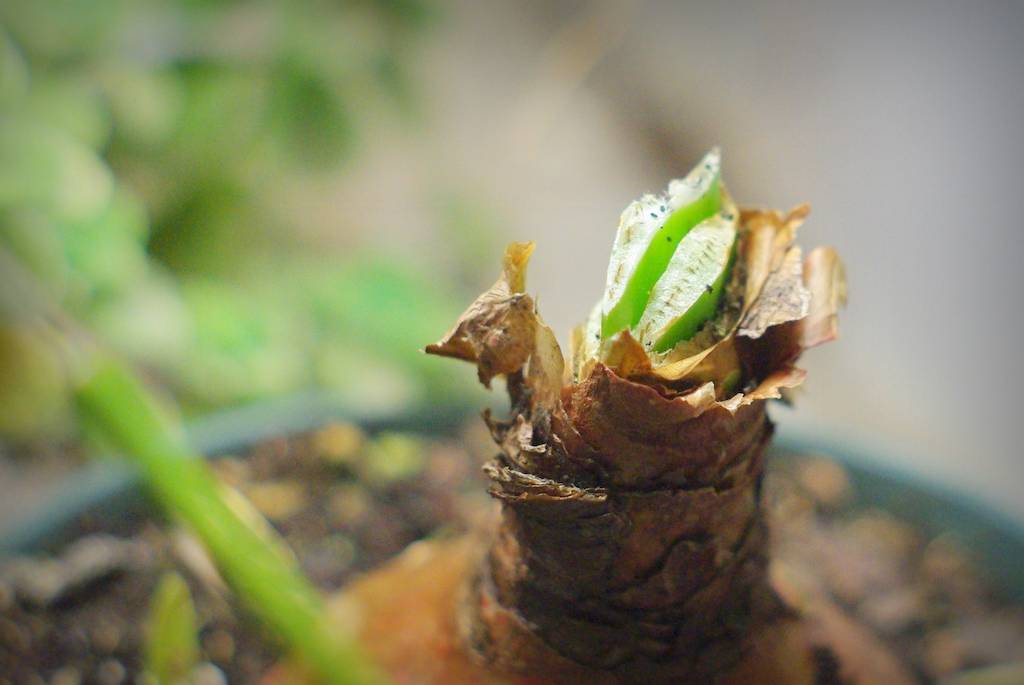

They are one of the easiest plants to grow for me since they go dormant with ease, and store well. They can get up to around 6 inches in diameter too so you need large pots.
ReplyDeleteI've been gifted a few over the years, but never had much interest in keeping them after the initial bloom was over. You've inspired me to try again...I saw a bunch on sale at the local big box. Something to get me through the long days until March!
ReplyDeleteHappy New Year!
We love amaryllis. Haven't gotten any yet this year. Maybe we'll pick some up this year, I suppose it's not too late.
ReplyDeleteNote the red blotches on the bulbs, this is Stagonospora curtisii. The Dutch ship bulbs to North America with this disease. I will get progressively worse if you grow them outdoors in a damp climate. Hippeastrums seem to have big and fast enough growing bulbs to keep the destruction to manageable levels; in time though I have found the leaves become horribly disfigured by it but still they flower. The Stag eats away at successive layers of the bulb.
ReplyDeleteThe Dutch could easily heat treat the bulbs to rid them of Stag. The disaease can spread to all bulbs in the Amarillydaceae.
It is impossible to find Hipps that aren't stag-infested. They are very rewarding bulbs that can flower several times a year and yes I grow staggy ones as well but am careful to wash up and sterilize tools after touching and working on them. Thought you might like to know....
BTW Alan - We grow them non-stop all year round and they flower 3+ times a year. Some of the species like striata flower every couple of months. They don't seem to need a dormant period, as long as you have the space year round.
ReplyDeleteJohn: These bulbs are at least 5 years old, and no disfiguration of leaves yet.
ReplyDeleteHow do you get it to flower 3 times a year? Mine grow year-round but don't flower until after dormancy.